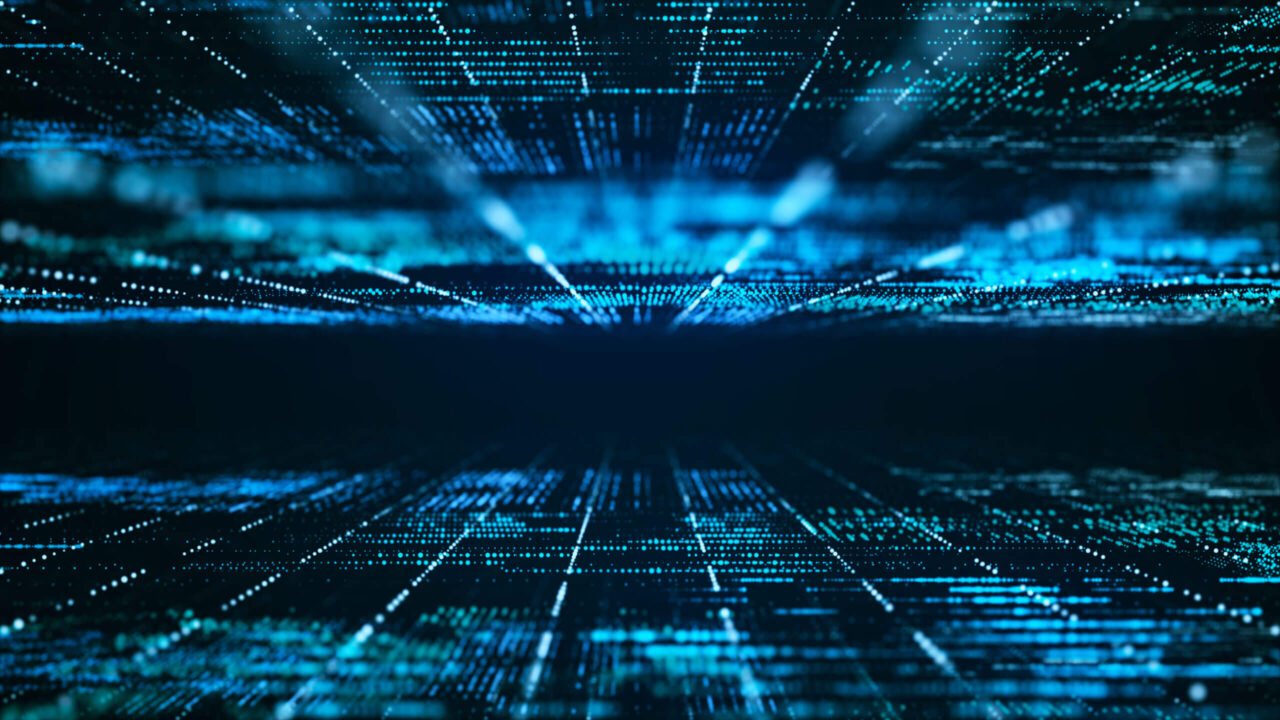The Muslim Umma is akin to a living organism; it is exposed to an environment and possesses its own genetic code. This genetic code represents the Umma’s field of possibilities––a series of unrealized choices capable of transforming the possible and potential into the real and actual.1 This field of possibilities, however, is delimited by power, or the selection of one possibility and its enforcement as a prescription to the exclusion and invisibilization of others. The result is the enforcement of a predetermined future and the subjection of the Umma to codes that dominate the present. As it stands, the Umma finds itself in a state of crisis and beset by the power of an invisible ideology, namely, neoliberalism.
To properly situate the gravity of the present situation and understand the crisis, one must ask what it means to belong to an Umma. The very notion of choice and power are inscribed, existentially and historically, in the very etymology of the word itself, which stems from the Arabic root amm, meaning “to head for, to quest, to lead, to guide, or to mean and intend” as a verb, and “destination, purpose, pursuit, aim, goal and end” as a noun.2 To have a direction is therefore the existential imperative and defining characteristic of an Umma. The absence of direction leads to an existential crisis at both the cognitive and strategic levels. It negates the capacity to choose one’s trajectory and future. The enforcement of one possibility over alternatives is carried out by necessity—as though we were bound by a deterministic future—and not by choice. An Umma guided by an image of a future that is not of its own making, such as neoliberalism, is no Umma at all. Neoliberalism’s relationship to Islam, at its high point, is the reduction of Islam to a brand and the forging of a “market Islam”––that is, an Islam that conforms and responds to the needs of the market. The Umma’s absence of critical consciousness and the dispersion of its potency under the rule of neoliberalism results in the erosion of the Muslim subject and their absorption into a new neoliberal subjectivity: an image of the self forged by neoliberalism. The Muslim self is reduced to that of a consumer and competitor, becoming both his own master and slave. Islam is reduced to a demographic trait, an identity marker, and a brand. The Umma’s failure to identify its own needs and aspirations, let alone imagine alternative futures that reflect its divinely ordained teleology, results in an inability to take effective action.
What is Neoliberalism?
The fundamental premise of neoliberalism is that the market is “autonomous” and represents the natural order of things. In Neoliberalism’s Demons: On the Political Theology of Late Capital, Adam Kotsko provides an apt genealogical definition of neoliberalism. He distinguishes neoliberalism from “classical” or laissez-faire liberalism. The latter refers to the European economic order during the nineteenth century in which the spheres of politics and economics operated as two autonomous spaces wherein the state was encouraged to resist meddling in the economy. This separation, however, proved to be untenable. In the post-WWI period, the state was forced to intervene to ameliorate the destructive effects of an unfettered market, leading to the implementation of various models of social democracy or the welfare state––what we can designate as “Fordism.” In the mid-1970’s, the Fordist model began to break down. There were two responses to this crisis. The first was a strengthening of the welfare state. The second was neoliberalism, as embodied by the likes of Margaret Thatcher in the United Kingdom and Ronald Reagan in the United States. The main idea behind the advocacy of neoliberalism was not simply getting the state “out of the way,” but the transformation of state power, institutions, and society in the image of the market. This meant the creation of new markets, where none had previously existed, through the privatization of public services. The competitive model would come to include more areas of life within its scope. As such, neoliberalism emerged as a way of life with its own metaphysics.3
In short, neoliberalism is the process wherein reality is recreated in the image of the god-like market. It is a form of “world-ordering” aiming to reshape the world at large, forging images of how the world is and how it ought to be.4 This process of world-ordering or reality-making begins with the recreation of man in the image of the market. It is the creation of a new subjectivity—man as a homo economicus whose ultimate telos, or purpose, is competition, consumption, and production. The forging of these new subjectivities has now extended to the Muslim world. To properly understand neoliberalism’s capacity to reshape the subjectivity of the Muslim self, we must turn to neoliberal power and how it operates in relation to the Muslim self and the ways in which it renders the Muslim self and the Umma at large impotent.
Phase One: Penetrating Consciousness and the Global Machine
The first phase in rendering the Umma impotent is to employ technology (e.g., “big data”) to penetrate consciousness. Neoliberalism thrives on the subordination of information and technology to its own designs, the most manifest example being the emergence of the global information machine. Big data employs two strategies to penetrate and subordinate the consciousness of the Muslim self. Through big data, the market can see into the soul and psyche of the Muslim self to transform it into a consumer through recording massive flows of data.5 This data, in turn, is employed as a strategy of domination and control and, as philosopher Byung-Chul Han explains, “facilitates intervention in the psyche and enables influence to take place on a pre-reflexive level.” Nowhere is this more evident than in the emergent marketing strategies targeting Muslims. Marketing corporations such as Ogilvy & Mather have created entire divisions like Ogilvy Noor to attract and engage with Muslim consumers through the technique of customization. As Berardi warns, the power of the contemporary global machine is in its ability to read big flows of data, which, in turn, allow it to adapt the global machine to the expectations of the living organism and to adapt the expectations of the living organism to the global machine.6
Phase Two: Creating New Subjectivities and the Illusion of Freedom
The second phase in rendering the Umma impotent is through the creation of a new neoliberal subjectivity. In the absence of critical consciousness, the Muslim subject finds itself operating in spaces that are not of its own making and under the illusion that it is free. Capitalism opens illusory spaces of play that masquerade as examples of “freedom.” To illustrate, power operates like a cat entrapping a mouse:
“The cat uses force to catch the mouse, to seize it, hold it in its claws and ultimately kill it. But while it is playing with it another factor is present. It lets it go, allows it to run about a little and even turn its back; and, during this time, the mouse is no longer subjected to force. But it is still within the power of the cat and can be caught again . . . The space which the cat dominates, the moments of hope it allows the mouse, while continuing however to watch it closely all the time and never relaxing its interest and intention to destroy it – all this together, space, hope, watchfulness and destructive intent, can be called the actual body of power, or, more simply, power itself.”7
These spaces for play are the spaces of consumption, production, and competition. Power has reached its zenith in the age of capitalism because it now operates through different registers of power: it assumes permissive and productive forms, not the violence that subdues the will and freedom through force, but through a power that is “shedding its negativity and presenting itself as freedom.” This illusory freedom operates in favor of capital:
“Power that is smart and friendly does not operate frontally – i.e., against the will of those who are subject to it. Instead, it guides their will to its own benefit. It says ‘yes’ more often than ‘no’; it operates seductively, not repressively. It seeks to call forth positive emotions and exploit them. It leads astray instead of erecting obstacles. Instead of standing opposed to the subject, smart and friendly power meets the subject halfway.”8
Under neoliberalism, power does not operate through violence but through a new form of politics, as we have already indicated, operating at the level of consciousness. Power that operates at the level of consciousness, much like our cat and mouse example, creates narrow spaces of action and the illusion of freedom. Young Muslims are increasingly seeking representation in these spaces: the right to consume, produce, and compete to become the primary marker of freedom. As Shelina Janmohamed observes, “It seems to be a radical idea that Muslims actually buy stuff. Muslims are saying: ‘Hello, we’ve got lots of money to spend, we’re young, we’re cool, please can you deal with us in the same way you deal with everyone else?’”9
And that is how capitalism operates: it manages the threshold of dissent. The neoliberal Muslim does not question power but seeks out an illusory distribution of power while leaving its structures intact at the level of consciousness and strategy. In the process, the Muslim subject loses themself in the name of “representation” and “visibility,” unaware that they have been rendered invisible. These are spaces that seduce Muslims into fabricating ‘dilemmas’ such as the burkini or the representation of Muslim fashion models, rather than the problems of the ecological crisis wrought by global capitalism or authoritarianism in the Muslim world.
Phase Three: Erosion of the Self and Generation M
The third phase in rendering the Umma impotent involves the erosion of the Muslim self. Through psychopolitics operating in the form of new neoliberal subjectivities and spaces, the boundaries that demarcate the self from the other are eroded. The relationships that bound the living organism are slowly displaced by new relations of consumption and competition. Han distinguishes between two forms of sameness: an authentic selfsame and a totalizing same. The authentic selfsame possesses a form and is gathered, as an inner collectedness, through the recognition of difference from the other. On the other hand, the totalizing same is formless and amounts “to an indifferent collection, a sprawling mass of indistinguishability.”10 The emerging totalizing same in the Muslim world is a sense of Muslimness that cannot recognize difference because it has not differentiated itself from the other and, as such, becomes indistinguishable from the subjectivities forged by neoliberalism. It is, necessarily, the rejection of Islamicity as an authentic selfsame because Islam, the grounds for Islamicity, is reduced to a brand and mere additive to the neoliberal self. The totalizing same––Muslims––is an aggregate of indistinguishable Muslim individuals. On the other hand, the authentic selfsame––Islamicity––is an integrated living organism.
The emergence of “Generation M” is, par excellence, the marketized and branded face of formless Muslimness. The erosion of Islamicity results in a blurring of the boundaries that demarcate living organisms from their environment––the Islamic from the non-Islamic, and the self from the other. Carl Schmitt warns that when the collective self “no longer possesses the capacity or the will to make this distinction, it ceases to exist politically [and religiously]. If it permits this decision to be made by another, then it is no longer politically free and is absorbed into another political system because “once absorbed into this “other” political system, any form of Islamic politics ceases to be.11
In the absence of demarcating boundaries and its own self-image, the Umma cannot translate its potency into power. The social organism behaves like “a beheaded body that still retains its physical energies but no longer possesses the ability to steer them in a reasonable direction.”12 Potency is dispersed and confined to the spaces of production, consumption, and competition. The current crisis of the Umma can therefore be defined as one of impotence wrought by the absence of demarcating boundaries that define the self, which in turn, results in a state of disarray and dispersion at both the level of consciousness and strategy. The totalizing same—Muslimness—as a sprawling mass always maintains a subordinate relationship to its external environment because it cannot navigate a world of “technical and geopolitical hyper-complexity.”13
The Unseen Order: The Metaphysical Horizons of Neoliberalism
Neoliberalism, a way of life with its own metaphysics, is based on a new gospel: the gospel of “Mammonism.” It is the good news that “money possessed and bestowed a trove of “miraculous facilities.”14 As a cult of money, it attributes “ontological power to money and existential sublimity to its possessors”––and everything, as McCarraher explains, receives its value from the “empty animism of money.”15 Neoliberalism conceals this metaphysics by presenting itself as the natural order. The metaphysical here does not mean philosophical speculation but, rather, an existential orientation based on our images of God, man, and the world. Metaphysics, as such, is a form of power that delineates our spaces of thought. It functions as an unseen order. Neoliberalism, as Kotsko reminds us, loves to hide. Its capacity to conceal its forged and arbitrary metaphysical origins represents the highpoint of its power. The neoliberal order conceals its man-made value and appears as a natural, necessary and transhistorical absolute.16
The fetish operates through power, which, as already noted, is not always violent and does not always operate through force. It can be permissive. That is the high point of power. It functions by eliciting a resounding “yes” from the obedient subject. It creates spaces for thought and action. As such, power is the negation of choice; “It may seem strange that a doctrine promising choice and freedom should have been promoted with the slogan “there is no alternative.”17 These spaces become insurmountable realities, or the “natural order of things.” As such, not only does power delimit our political horizons but extends beyond that by inaugurating a new metaphysics that functions as an unseen order with its own regimes of knowledge. The function of these regimes of knowledge is the distortion of reality. These acts of distortion result in the emergence of “second-creators” or the tāghūt, which literally means the one who transgresses the divine order of things. Under neoliberalism, that is the tāghūt of Mammon, or wealth, as a false object of worship and devotion. Goldberg, in his discussion of race creation, refers to these as “anthropic gods” who create new relations “as though given, fixed from on high, seemingly natural phenomena imposed almost unchangingly upon an innocent and so non-responsible social order.”18 The tāghūt descends into what the Qur’ān describes as a state of istignā’ to think as though the self is free and independent from anything that is beyond itself as with the ostensibly “free-market.” The tāghūt alienates the self from its primordial God-given self, the fitra, through the creation of a new self, the homo economicus.19 As such, the neoliberal order emerges as a “second-creator” in that it creates new social, economic, and political realities and re-creates man, God, and the cosmos in its own image. Enrique Dussel describes this as the process of fetishization wherein a system forgets its historical contingency and represents itself as necessary and a transhistorical absolute that is divine in its origins and closed in on itself. Neoliberalism is not only a mode of ideological domination but also an “ideological concealment of reality.”20 It is through metaphysics-as-power that the neoliberal order can forge a new Muslim self: Generation M. It is an act of creation “that brings a subject into existence”––like something performed by a writer, or a deity. This fiction or “original covenant” becomes “a sacred, unquestionable tale whereby a people is brought or, rather, brings itself into existence.”21 The gospel of Mammon declares that “money not only purchases everything; it also brings things into being from nothing, performing all manner of astonishing feats of moral and metaphysical alchemy.”22
What, then, are the origins of neoliberalism and its metaphysical order? To properly situate such an exposition, we must turn to the underside of modernity and the concept of the secular as a space of thought to understand how the market came to be viewed as an autonomous and self-regulating space. Modernity is more than just a project of human self-assertion or the sovereignty of reason. The autonomy of human self-assertion is, in fact, possible only because modernity “reoccupies the sovereignty of God with that of the world.” 23 The autonomy of the “free-market” is possible only when we conceive of the world as an autonomous sealed-off totality. That is to say, the sovereignty of God was replaced with a “surrogate form of transcendence.”24 That is, not through the abandonment of sacralization but, rather, the absolutization and sacralization of the world itself. The secular did not bring about, as McCarraher explains, a disenchantment of the world but its misenchantment. In a world enchanted by the animism and metaphysics of money and wealth as such, neoliberal power forges the enchanted secular as a space of thought and an iron-caged world, while the market is its space of action. As John Millbank reminds us, “once, there was no secular”; the secular had to be imagined and created in both theory and practice. This process of automization was not limited to the natural world but was extended and forged for itself a new autonomous object: the economic as a field of “pure power.” The critical point to make here is that the economic was not a space waiting to be filled by the homo economicus —out there—already autonomous, only waiting to be occupied. Its autonomy had to be imagined before it could be occupied and closed onto itself, it had to be created ex nihilo.
Moving Forward: Beyond Neoliberal Power
The neoliberal images of the self and the world that have penetrated our very consciousness demands of us nothing short of an exorcism. If neoliberalism is the ideological concealment of reality, then what we are in need of is a radically new and illuminating consciousness. Tawḥīd inaugurates a new critical consciousness characterized by its negating, or critical, power; that is, its capacity to reject the given (the world-as-it-is) and imbue new meaning to the present and future (the world-as-it-ought-to-be). The world-as-it-ought-to-be is guided by an image of the self, the Umma, as a global community with a divine telos rather than a formless and indistinguishable mass of individuals.
The demystification of neoliberalism and the idolatry of capital necessitates that our critical consciousness is grounded in a new metaphysics, tawḥīd, signifying a radically different conception of man, the world, and the cosmos. Tawḥīd furnishes a new critique of capitalism and neoliberalism. The alienation wrought by capitalism is not reducible to alienation of labour. Second-creators alienate man from their First-Creator, their God-given primordial self, and the cosmos as a divine balance. Tawḥīd, on the other hand, reveals that man, God, and the cosmos are not created in the image of the market but in the image of God as the only transcendental absolute. The totality of what is non-God, the cosmos, becomes a condition or an instrument for the divine activity (shart aw ala il-fa’iliyya al-ilahiyya). Thus, the world is not a closed space independent of God but rather a space for the perpetual creative acts of God. The cosmos is a mīzan, a divinely-ordained balance. The ontological vocation of man is not consumption, production, and competition but the ordained and divinely-authorized task —al-istikhlaf (viceregency)—of preserving the balance, that is justice. Moreover, in affirming that God is uniquely the only transcendental absolute, exterior to all temporal formations, we de-fetishize capital and demystify the neoliberal order. Neoliberalism no longer represents a natural order of things but is now identified as an ideology with its own metaphysics and forms of power. The imperative of critical consciousness is an awareness of how power operates, which in turn, allows us to demystify neoliberalism.25 This facilitates the capacity to make conscious choices as normative and strategic decisions––to choose new possibilities inscribed in the present as potential futures and trajectories through our conscious evaluations of the world.
Notes
- “Let’s look at the evolution of a living organism. The field of possibility of the organism is included in its genetic code, but the code is not the history of the future. It rather opens a range of possible evolutions, and in this range many different pathways can be taken. Epigenesis (the process by which an organism develops out of its genetic code) constantly exposes the emerging organism to the environment, to the events occurring that the code cannot predict or perform.” Franco Berardi, Futurability: The Age of Impotence and the Horizon of Possibility (London: Verso Books, 2017), 4.
- Tamim Al-Barghouti, The Umma and the Dawla: The Nation State and the Arab Middle East (London: Pluto Press, 2008), 37.
- Adam Kotsko, Neoliberalism’s Demons: On the Political Theology of Late Capital (Stanford: Stanford University Press, 2018), 3-6.
- Adam Kotsko, Neoliberalism’s Demons, 7.
- Berardi, Futurability, 19.
- Berardi, 19.
- Byung-Chul Han, What is Power? (London: Polity Press, 2019), 20.
- Byung-Chul Han, Psychopolitics: Neoliberalism and the New Technologies of Power (London: Polity Press, 2017), 10.
- Harriet Sherwood, “Meet Generation M: The Young, Affluent Muslims Changing the World,” Guardian, September 3, 2016, https://www.theguardian.com/world/2016/sep/03/meet-generation-m-the-young- affluent-muslims-changing-the-world.
- Han, The Erosion of the Other, 3.
- Sabet, Islam and the Political, 11.
- Franco Berardi, Futurability, 23.
- Berardi, Futurability, 31.
- Eugene McCarraher, The Enchantments of Mammon: How Capitalism Became the Religion of Modernity (Cambridge: Harvard Press: 2019), 4.
- Eugene McCarraher, The Enchantments of Mammon, 5.
- Rafael Vizcaíno, “Liberation Philosophy, Anti-Fetishism, and Decolonization,” Journal of World Philosophies 6, no. 2 (2021): 61-75, at 62.
- George Monbiot, “Neoliberalism – The Ideology at the Root of all our Problems,” Guardian, April 5, 2016, https://www.theguardian.com/books/2016/apr/15/neoliberalism-ideology-problem-george-monbiot.
- David Theo Goldberg, Racist Culture: Philosophy and the Politics of Meaning (Massachusetts: Blackwell Publishing,1993), 83.
- On “second-creators” see Sherman Jackson, Islam and the Blackamerican: Towards the Third Resurrection (Oxford: Oxford University Press, 2005), 173.
- Rafael Vizcaíno, “Liberation Philosophy, Anti-Fetishism, and Decolonization,” 65.
- McCarraher, The Enchantments of Mammon, 10.
- McCarraher, 11.
- Joseph Albernaz and Kirill Chepurin, “The Sovereignty of the World: Towards a Political Theology of Modernity (After Blumenberg),” in Interrogating Modernity: Debates with Hans Blumenberg, ed. Agata Bielik-Robson and Daniel Whistler (Cham: Palgrave Macmillan, 2020), 83-107, at 85.
- Terry Eagleton, Culture and the Death of God (United Kingdom: Yale University Press, 2014), ix.
- “One could almost say that, wherever nobody is talking about power, that is where it unquestionably exists, at once secure and great in its unquestionability. Wherever power is the subject of discussion, that is the start of its decline.” Han, What is Power, 98.




